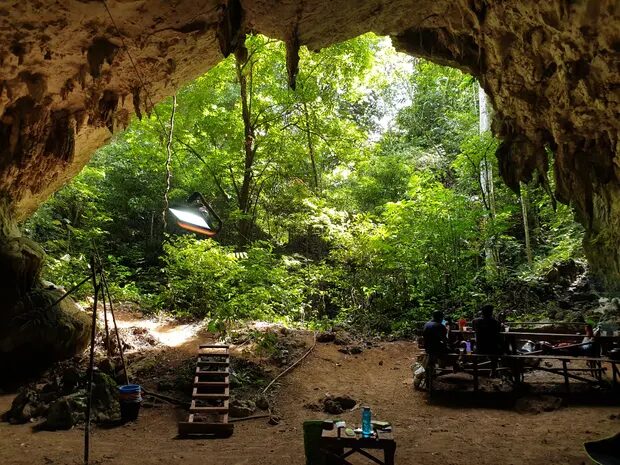
An expedition team led by Australian and Indonesian archaeologists stumbled upon the skeletal remains while excavating a limestone cave in East Kalimantan, Borneo looking for ancient rock art in 2020.
The finding turned out to be evidence of the earliest known surgical amputation, pre-dating other discoveries of complex medical procedures across Eurasia by tens of thousands of years.

Palaeopathological analysis of the remains revealed bony growths on the lower left leg indicative of healing and suggesting the leg was surgically amputated several years before burial.
Dr Tim Maloney, a research fellow at Australia's Griffith University who oversaw the excavation, said the discovery was an "absolute dream for an archaeologist".
He said the research team, which included scientists from the Indonesian Institution for Archaeology and Conservation, was examining ancient cultural deposits when they crossed stone markers in the ground revealing a burial site.
After 11 days of excavation, they found the skeleton of a young hunter-gatherer with a healed stump where its lower left leg and foot had been severed.
Maloney said the nature of the healing, including the clean stump showed it was caused by amputation and not an accident or animal attack.
"[The hunter] survived not just as a child, but as an adult amputee in this rainforest environment," Maloney said. "Importantly, not only does [the stump] lack infection, but it also lacks distinctive crushing."

The previous oldest evidence of a successful amputation was a 7,000-year-old skeleton of an elderly farmer from stone age France. His left arm was amputated above the elbow.
"This finding very much changes the known history of medical intervention and knowledge of humanity," Maloney said.
"It implies that early people ... had mastered complex surgical procedures allowing this person to survive after the removal of a foot and leg."
Maloney said the stone age surgeon must have had detailed knowledge of anatomy, including veins, vessels and nerves, to avoid causing fatal blood loss and infection.
He said the successful operation suggested some form of intensive care, including regular disinfection post-operation.
Emeritus Prof Matthew Spriggs of the Australian National University School of Archaeology and Anthropology, who was not involved in the study, said the discovery was "an important rewrite of our species history" that "underlines yet again that our ancestors were as smart as we are, with or without the technologies we take for granted today".
Spriggs said it should not be surprising that stone age people could have developed an understanding of the internal workings of mammals through hunting, and had treatments for infection and injury.
"We tend to forget that modern humans like us 30,000 years ago ... would have had their intellectuals, their doctors, their inventors," he said.
He said they would have had to experiment with plant medicines and other treatments to stay alive.
"Any inhabitants of tropical rainforests today, usually now mixing hunting and gathering with forms of agriculture, have a large pharmacopoeia that would have to have been developed over millennia."
The study was published in the journal Nature.




Some ancient Indians were interested in researching this topic scientifically and not by relying on philosophical analyzes and religious beliefs only, and they actually tried to do several brain surgeries, the first evidence of brain surgery in India was a trepanned skull dates back to 2350-2050 B.C, “Trepanation“ a surgery had been around 10,000 BC Approximately, in Asia, Africa and Europe. This skull was found in Burzahom near the Kashmir Valley in India. This skull belonged to a girl aged 26-30 years
[Link]
Note: Today's Indians are taking credit for Vedas but Vedas belongs to aryans, sanscrit is language of aryans.